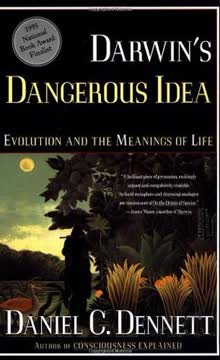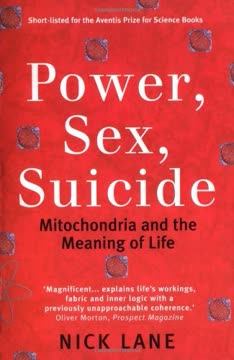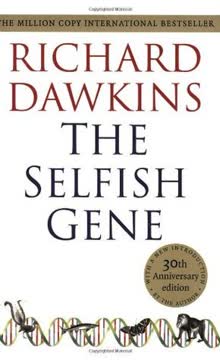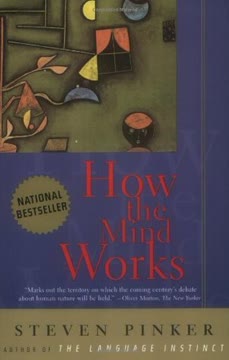Key Takeaways
1. Sex is about disease: The Red Queen hypothesis
Sex is about disease. It is used to combat the threat from parasites.
Parasites drive evolution. The Red Queen hypothesis proposes that sexual reproduction evolved as a way for hosts to stay ahead in the evolutionary arms race against parasites. By shuffling genes each generation, sex creates offspring with new genetic combinations that may be resistant to current parasites. This constant adaptation is likened to the Red Queen in Alice in Wonderland, who must keep running just to stay in place.
Evidence supports this theory:
- Parasites evolve faster than hosts due to shorter generation times
- Sexual species are more common in parasite-rich environments
- Asexual species like bdelloid rotifers have alternative anti-parasite defenses
- Computer simulations show sex is advantageous when parasites are present
The handicap principle suggests that elaborate sexual displays (like a peacock's tail) honestly signal an individual's ability to resist parasites, allowing mates to choose partners with "good genes" for disease resistance.
2. Sexual selection drives evolution of extravagant traits
Fashion is change and obsolescence imposed on a pattern of tyrannical conformity.
Runaway selection creates extravagant traits. Sexual selection can lead to the evolution of elaborate ornaments and behaviors that seem to defy natural selection. This occurs through two main mechanisms:
- Fisherian runaway selection: Females prefer a trait, males evolve more extreme versions, female preference co-evolves to be stronger, creating a feedback loop.
- Good genes hypothesis: Elaborate traits honestly signal genetic quality.
Examples of sexually selected traits:
- Peacock's tail
- Bird of paradise plumage and dances
- Bowerbird's elaborate bower constructions
- Human art, music, and humor
These traits often impose survival costs on the individuals that possess them, but persist because they confer a reproductive advantage. The process can lead to rapid evolution of species-specific displays and preferences, potentially contributing to speciation.
3. Human mating strategies: A balance of polygamy and monogamy
If we are programmed to be what we are, then these traits are ineluctable. We may, at best, channel them but we cannot change them.
Humans employ mixed strategies. Our evolutionary history has shaped a mating psychology that includes both polygamous and monogamous tendencies. This reflects the varying ecological and social conditions our ancestors faced.
Key aspects of human mating:
- Men generally seek more sexual partners than women
- Women are more selective in mate choice
- Long-term pair bonds are common, but not universal
- Extra-pair mating (adultery) occurs in most cultures
- Wealth and status increase male mating success
These patterns stem from differences in parental investment between males and females. However, human behavior is flexible, and cultural norms strongly influence how these tendencies are expressed. Understanding our evolutionary heritage can inform, but does not dictate, how we choose to structure relationships and societies.
4. Gender differences in mate preferences and behaviors
To speak of the purpose of sex, or of the function of a particular human behaviour, is shorthand.
Evolutionary pressures shaped different strategies. Men and women faced different challenges in our evolutionary past, leading to some consistent differences in mate preferences and behaviors across cultures.
Key gender differences:
- Men place higher value on physical attractiveness and youth
- Women place higher value on resources and status
- Men are more visually stimulated; women more by context and personality
- Men are more prone to sexual jealousy; women to emotional jealousy
- Women are more selective in short-term mating
These differences reflect the asymmetry in potential reproductive success and parental investment between the sexes. However, there is significant overlap between men and women, and individual variation is large. Cultural factors also play a major role in shaping how these tendencies are expressed.
5. The evolution of human intelligence: Machiavellian and sexual selection
I suggest that the neocortex is not primarily or exclusively a device for tool-making, bipedal walking, fire-using, warfare, hunting, gathering, or avoiding savanna predators. None of these postulated functions alone can explain its explosive development in our lineage and not in other closely related species.
Social and sexual pressures drove brain evolution. The rapid expansion of human brain size and intelligence likely resulted from a combination of factors:
- Machiavellian intelligence: The need to navigate complex social relationships
- Sexual selection: Mate choice favoring intelligence and creativity
Evidence for social intelligence:
- Humans excel at mind-reading and social cognition
- Gossip and social information dominate human conversation
- Large group sizes compared to other primates
Evidence for sexual selection of intelligence:
- Human courtship involves displays of wit, humor, and creativity
- Intelligence is universally valued in mate choice
- Rapid brain evolution mirrors patterns seen in sexually selected traits
This hypothesis suggests that human intelligence evolved not primarily for tool use or foraging, but for social manipulation, cooperation, and mate attraction. Our large brains may be, in part, the result of a cognitive version of the peacock's tail.
6. Beauty standards: Universal cues of health and fertility
A woman whose vital statistics are 35–35–35 is overweight, pregnant, or middle-aged. A woman whose vital statistics are 35–22–35 is a candidate for the centrefold of Playboy.
Beauty reflects biological fitness. While cultural standards of beauty vary, there are some near-universal preferences that likely reflect evolutionary adaptations for choosing healthy, fertile mates.
Common beauty cues:
- Facial symmetry
- Clear skin
- Lustrous hair
- Waist-to-hip ratio (women)
- Muscular build (men)
- Averageness of features
These traits tend to honestly signal health, youth, and reproductive potential. However, cultural factors can modify or exaggerate these basic preferences. For example, the extreme thinness valued in some modern cultures may be a supernormal stimulus derived from preferences for youth and health.
Understanding the evolutionary basis of beauty standards can help explain their power and persistence, but does not justify discrimination based on appearance.
7. Genetic conflicts shape reproduction and gender
The nuclear genes of both father and mother between them arrange that the organelles of the male are slaughtered. It is an advantage (to the male nucleus, not the male organelles) to be of the type that allows its organelles to be killed, so that a viable offspring results.
Genetic conflicts drive evolution. Different genes within an organism can have conflicting interests, leading to evolutionary arms races within genomes. These conflicts have shaped many aspects of reproduction and gender.
Examples of genetic conflicts:
- Cytoplasmic male sterility in plants
- Meiotic drive genes that cheat during cell division
- Genomic imprinting in mammals
- The evolution of separate sexes
These conflicts arise because not all genes are inherited in the same way. For example, mitochondrial DNA is inherited only from the mother, creating a conflict with nuclear genes. Understanding these conflicts helps explain puzzling aspects of biology, such as why there are typically only two sexes and why some genes are silenced depending on which parent they come from.
Recognizing the role of genetic conflicts challenges the view of organisms as perfectly adapted machines and highlights the complex evolutionary forces shaping life.
Human Sourced: This is a rewrite and summary of the book "The Red Queen: Sex and the Evolution of Human Nature" by Matt Ridley, based on the content provided. The key takeaways and supporting details aim to capture the main ideas and arguments presented in the book, reorganized into a more concise format.
Last updated:
FAQ
What's The Red Queen: Sex and the Evolution of Human Nature about?
- Exploration of Sexual Reproduction: The book delves into the evolution of human nature, focusing on sexual reproduction as a strategy to combat disease and enhance genetic diversity.
- Interconnectedness of Sex and Evolution: It posits that understanding human nature requires comprehending how sexuality evolved, as it is central to our evolutionary history.
- Cultural and Biological Insights: Ridley combines biology, anthropology, and psychology to explore how sexual selection influences human behavior, societal structures, and intelligence.
Why should I read The Red Queen by Matt Ridley?
- Engaging and Informative: Ridley presents complex scientific concepts in an accessible and entertaining manner, suitable for both casual readers and those with a scientific background.
- Provocative Ideas: The book challenges conventional views on human nature and sexuality, encouraging critical thinking about the implications of sexual selection on society.
- Interdisciplinary Approach: By drawing from various fields, it offers a comprehensive view of human evolution that enriches the reader's understanding of the subject matter.
What are the key takeaways of The Red Queen?
- Sexual Reproduction as a Defense: Sexual reproduction evolved as a mechanism to combat diseases and enhance genetic diversity.
- Universal Human Nature: There is a typical human nature that transcends cultural differences, shaped by our evolutionary past.
- The Red Queen Hypothesis: Species must constantly adapt to survive in a competitive environment, akin to running in place to stay in the same spot.
How does The Red Queen explain the evolution of human nature?
- Focus on Sexual Selection: Understanding human nature is impossible without considering the evolution of sexuality.
- Genetic and Cultural Interplay: Both genetic predispositions and cultural factors shape human behavior, with culture being a product of human nature.
- Universal Traits: Traits common across cultures are rooted in our evolutionary history, fundamental to understanding our nature.
What role do parasites play in The Red Queen?
- Parasites as Evolutionary Drivers: The constant threat of parasites has driven the evolution of sexual reproduction.
- Arms Race Dynamics: An evolutionary arms race exists between hosts and parasites, where each must adapt to the other's changes.
- Sex as a Defense Mechanism: Sexual reproduction maintains genetic diversity, helping hosts resist parasitic infections.
What is the significance of sexual selection in The Red Queen?
- Driving Force of Evolution: Sexual selection is crucial in the evolution of species, influencing traits and behaviors.
- Impact on Human Behavior: It shapes human relationships, mate preferences, and social structures.
- Beauty and Attraction: Sexual selection leads to the development of beauty and attractiveness as criteria for mate choice.
How does The Red Queen address the concept of gender?
- Two Genders Explained: Most species have two distinct genders to resolve conflicts between genes.
- Conflict Among Genes: Genes within an organism can have conflicting interests, leading to the evolution of separate genders.
- Evolutionary Strategies: Various strategies determine gender, including environmental factors and social status.
What is the Red Queen hypothesis?
- Constant Adaptation Required: Species must continuously adapt to survive in a competitive environment.
- Sexual Reproduction as a Strategy: It is a key strategy for maintaining genetic diversity in response to evolving threats.
- Implications for Evolutionary Biology: The hypothesis has significant implications for understanding evolutionary dynamics, especially in host-parasite interactions.
How does The Red Queen relate to human intelligence?
- Intelligence as a Product of Sexual Selection: Human intelligence may have evolved due to sexual competition.
- Cognitive Abilities and Mating: Cognitive abilities may enhance an individual's attractiveness as a mate, influencing reproductive success.
- Evolutionary Perspective on Intelligence: Intelligence is not merely a byproduct of survival but a trait shaped by sexual selection.
How does The Red Queen explain the concept of sexual selection?
- Definition of Sexual Selection: A form of natural selection where certain traits increase mating and reproductive success.
- Male Competition and Female Choice: Males often compete for female attention, while females select mates based on genetic fitness.
- Evolutionary Implications: Sexual selection profoundly impacts human behavior, social structures, and gender roles.
How does The Red Queen address the concept of monogamy?
- Monogamy as a Strategy: It is a common mating system in humans, ensuring parental investment and reducing male competition.
- Cuckoldry and Jealousy: Fear of cuckoldry influences male behavior and social norms around fidelity and marriage.
- Evolutionary Advantages: Monogamous relationships benefit both sexes, allowing for cooperative parenting and increased offspring survival.
How does The Red Queen relate to modern societal issues?
- Reflection on Gender Roles: It prompts reconsideration of traditional gender roles and expectations in relationships.
- Understanding Infidelity: Frames adultery as an evolutionary strategy, encouraging a nuanced understanding of infidelity.
- Cultural Critiques: Critiques societal norms surrounding marriage and fidelity, suggesting they are rooted in evolutionary pressures.
Review Summary
The Red Queen receives mixed reviews. Many praise its accessible exploration of evolutionary biology and human sexuality, finding it insightful and thought-provoking. Readers appreciate Ridley's examination of sexual selection and its impact on human nature. However, some criticize the book for outdated or biased views, particularly regarding gender differences. Critics argue that certain claims lack sufficient evidence or oversimplify complex issues. Despite these concerns, many readers find the book engaging and informative, recommending it for those interested in evolutionary psychology and human behavior.
Similar Books
Download PDF
Download EPUB
.epub digital book format is ideal for reading ebooks on phones, tablets, and e-readers.

















